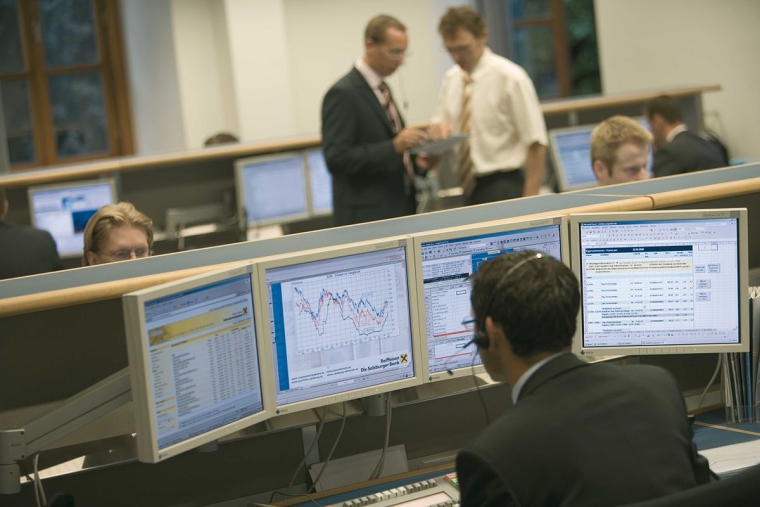
The risk-on market moves that accompanied the US-China mini trade deal on Friday have partially unwound amidst growing scepticism about the agreement. Trading activity has been light however with both the US and Japan on holiday. The NZD has fallen 0.6% and is back at 0.63.
After the euphoria of Thursday and Friday, market sentiment has been more subdued over the past 24 hours, as investors start to question the substance of the US-China partial trade deal (which will see China increase purchases of US agricultural goods and the US suspend planned tariffs for October). Media have reported that China wants another high-level meeting later this month to finalise Friday’s agreement, suggesting that not all the details are nailed down. Bloomberg has also reported that China wants the US to suspend the tariffs on ~$160b of Chinese imports due to take place in December. Market participants are conscious that previous US-China ‘agreements’ have subsequently broken down amidst misunderstandings among the two sides. More encouragingly, the Editor of the Global Times, thought to be well connected to the Chinese government, tweeted “Based on what I know, China-US trade talks made breakthrough last week and the two sides have the strong will to reach a final deal.”
The US and Japanese have been on holiday this week, so trading activity has been lighter than usual. The implied yield on the 10 year Treasury note future points to a 2bp decline in rates while S&P500 futures imply a less than 0.1% decline in equities. Both Treasury yields and equities are significantly higher than the levels prevailing the middle of last week. Movements tonight will give a better steer on the market’s verdict on the mini trade agreement.
Likewise, there has been a partial reversal in currency market moves seen over Thursday and Friday as expectations for both a US-China trade deal and EU-UK Brexit agreement grew. The USD has risen around 0.2%, in index terms, after having fallen 0.4% on both Thursday and Friday, while safe haven currencies have outperformed.
The GBP has fallen almost 1%, to 1.2560, as market participants start to question whether there is enough time for the two sides to do a deal ahead of the EU Summit that takes place on Thursday. “Intense” negotiations were still ongoing but EU chief negotiators Michel Barnier said there was "a big gap" to close on the issue of Northern Ireland. The UK 10 year gilt yield fell 7bps to 0.64%, reflecting reduced market optimism for a near-term Brexit agreement (it is almost 25bps higher than the levels seen mid-last week however).
The NZD sits behind the GBP on the currency leader-board, down 0.6% to 0.63. The NZD is back to the levels it was trading on Thursday morning, before market speculation of a US-China trade deal started to gain momentum. Weaker than expected Chinese trade data contributed to the falls in the NZD and AUD, although the CNY itself is actually stronger on the day. Yesterday’s trade data revealed that Chinese imports were down a sharp -8.5% y/y against -6.0% expected, while exports also contracted at -3.2% y/y against -2.8% expected. Other commodity currencies have underperformed, albeit by less than the NZD, with the CAD, AUD and Norwegian Krona down between 0.2% to 0.4%.
In the domestic market yesterday, rates spiked higher on the market open, reflecting the positive trade news over the weekend. The 10 year NZ swap rate traded as high as 1.31% before easing back to 1.28% by the close of trading (+3bps). There was little impact on the short-end of the NZ curve from the US-China ‘mini’ trade deal, with the 2 year swap rate ending the day unchanged, at 0.89%. While the chance of a 50bp OCR cut by the RBNZ at the November meeting has effectively been priced-out, the market seems reluctant to pare back OCR rate cut expectations much further, given still weak leading indicators of NZ growth and the RBA easing expected over the coming months.
Yesterday’s Performance Services Index (PSI) was virtually unchanged in September (at 54.4), very close to its long-run average. The resilience in the PSI (indeed, new orders rose to an impressive 59.3) stands in stark contrast to the weakness in the Manufacturing equivalent (the PMI) which has been stuck in contraction for three months running. That’s very much a global theme at present, with the manufacturing sector struggling under the weight of slowing global growth and the trade war while services remain supported by domestic demand and low unemployment rates. An index combining the PMI and PSI points to annual GDP growth around the 1.5% mark, which would be well below the RBNZ’s forecasts if realised.
The only major global data released overnight was the Empire manufacturing survey, the first of the regional Fed surveys to be released for October. It bounced to 4 in October from 1 the previous month, although it remains at subdued levels, consistent with weakness in the broader manufacturing sector.
The RBA minutes are released this afternoon and our NAB colleagues think it likely they will maintain the dovish tone adopted in the last statement, which emphasised the goal of full employment. The German ZEW survey is released tonight alongside UK labour market data, although the latter is unlikely to get any market reaction with investors much more fixated on Brexit. There is also another Global Dairy Trade auction tonight, at which we are looking for another flat-to-slightly-higher result in prices. There is upside to our milk price forecast of $6.70 for 2019/20 if dairy prices and the exchange rate can consolidate around current levels.

We welcome your comments below. If you are not already registered, please register to comment
Remember we welcome robust, respectful and insightful debate. We don't welcome abusive or defamatory comments and will de-register those repeatedly making such comments. Our current comment policy is here.